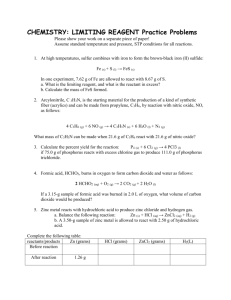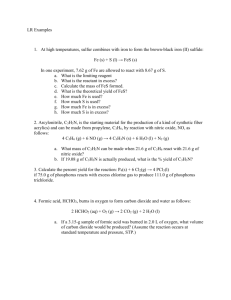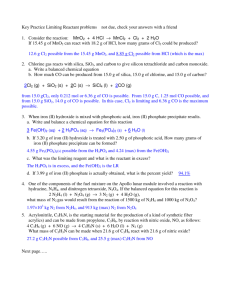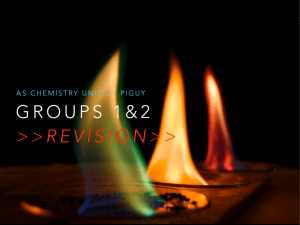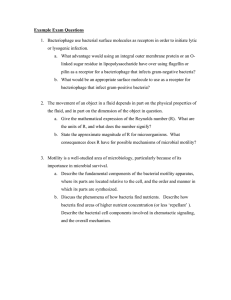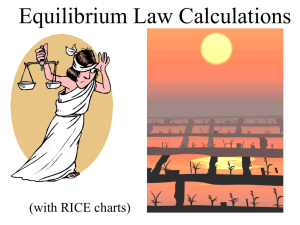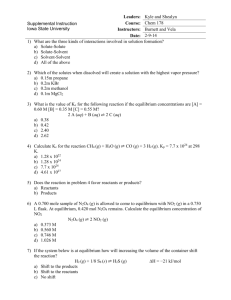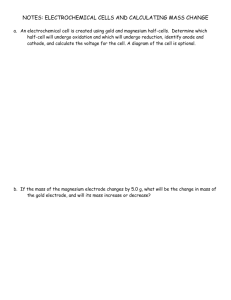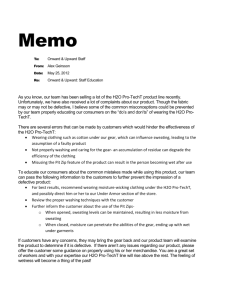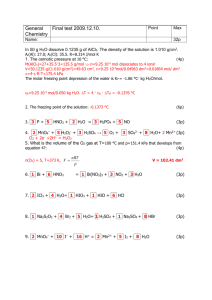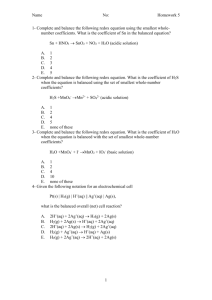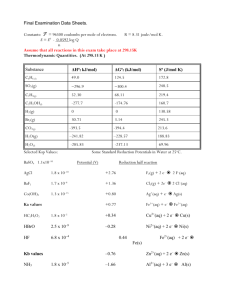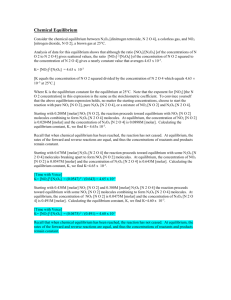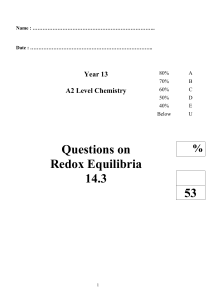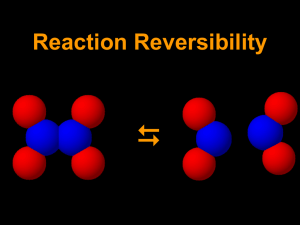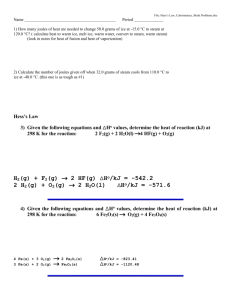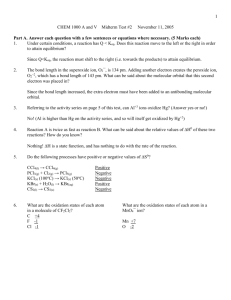General Chemistry Final test 2009.12.03. Point Max Name: 32p In
advertisement
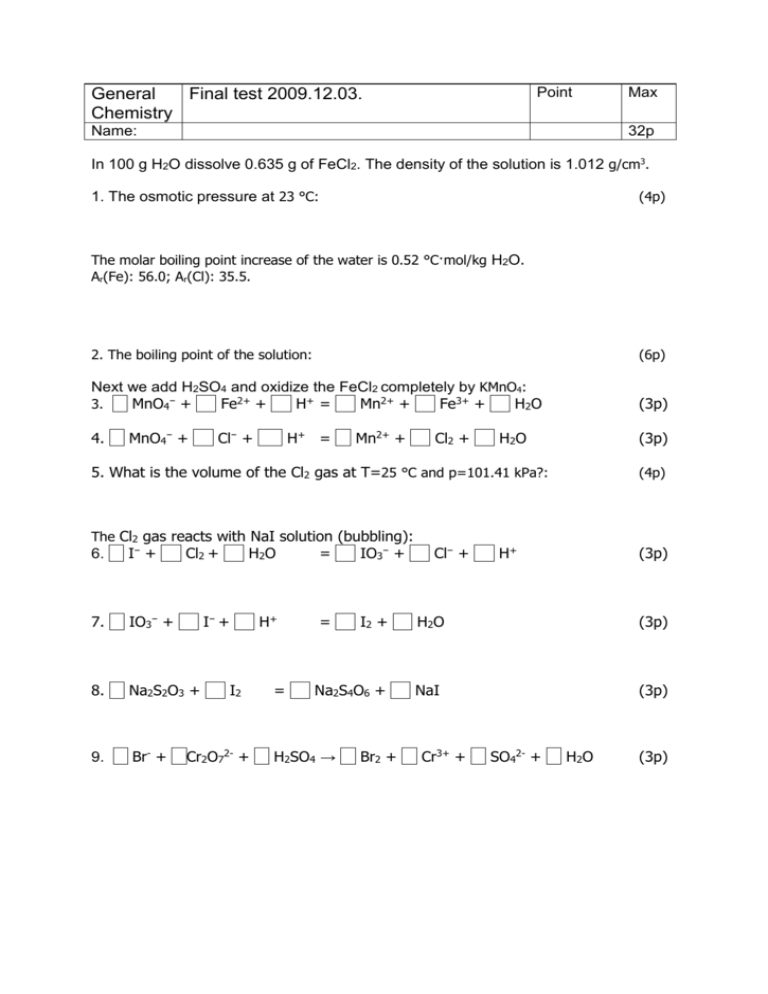
Point General Final test 2009.12.03. Chemistry Name: Max 32p In 100 g H2O dissolve 0.635 g of FeCl2. The density of the solution is 1.012 g/cm3. 1. The osmotic pressure at 23 °C: (4p) The molar boiling point increase of the water is 0.52 °C·mol/kg H2O. Ar(Fe): 56.0; Ar(Cl): 35.5. 2. The boiling point of the solution: (6p) Next we add H2SO4 and oxidize the FeCl2 completely by KMnO4: 3. MnO4− + Fe2+ + H+ = Mn2+ + Fe3+ + H2O (3p) 4. (3p) MnO4− + Cl− + H+ = Mn2+ + Cl2 + H2O 5. What is the volume of the Cl2 gas at T=25 °C and p=101.41 kPa?: The Cl2 gas reacts with NaI solution (bubbling): 6. I− + Cl2 + 7. IO3− + 8. Na2S2O3 + 9. Br- + H2O = IO3− + H+ = I2 + I− + I2 Cr2O72- + = Na2S4O6 + H2SO4 → Br2 + Cl− + (4p) H+ (3p) H2O (3p) NaI (3p) Cr3+ + SO42- + H 2O (3p) Point General Final test 2009.12.03. Chemistry Name: Max 32p Name the following compounds (1p for each, total 10 points): 10. NO 11. NO2 12. N2O 13. N2O3 14. N2O4 15.NaClO 16. KClO2 17. HClO3 18. HClO4 19. CaSO3 Reaction: N2O4 (g) 2 NO2 (g). Ar(N): 14; Ar(O): 16. Volume = 1 dm3, T= 70 °C, the initial mass of the N2O4 is 9.2 g. We wait for the dissociation equilibrium and in the equilibrium we measure the total pressure of 399.24 kPa Calculate equilibrium constant with mols (Kn), with concentrations (Kc), and with pressure (Kp), the degree of dissociation (), the volume %, and the average molar mass. 20. Kn = (4p) 21. Kc = (4p) 22. Kp = (4p) 23. = (4p) 24. volume % = 25. average molar mass: N2O4 (g) NO2 (4p) (2p) General Final test 2009.12.03. Chemistry Point Max Name: 34p 2+ Calculate the following non standard electrode potentials if °(Cu/Cu )= +0,340 V: 26. Metal Cu in 0.05 M CuSO4 solution: (4p) 27. Metal Cu in saturated Cu3(PO4)2 solution: (6p) Ksp[Cu3(PO4)2]= 1.08 x 10 −13 28. Metal Cu in saturated Cu(OH)2 solution at pH=9: (6p) Ksp[Cu(OH)2]= 5.0·x 10−18 29. Hydrogen electrode in pH 12.5 NaOH solution: (6p) 30. Hydrogen electrode in 0.02 M weak acid solution: Ks(weak acid)=1.0 x 10−4 (8p) 31. Connect the electrodes in 29. and 30. What is the cell potential? Which electrode is the cathode and which electrode is the anode? (4p)
